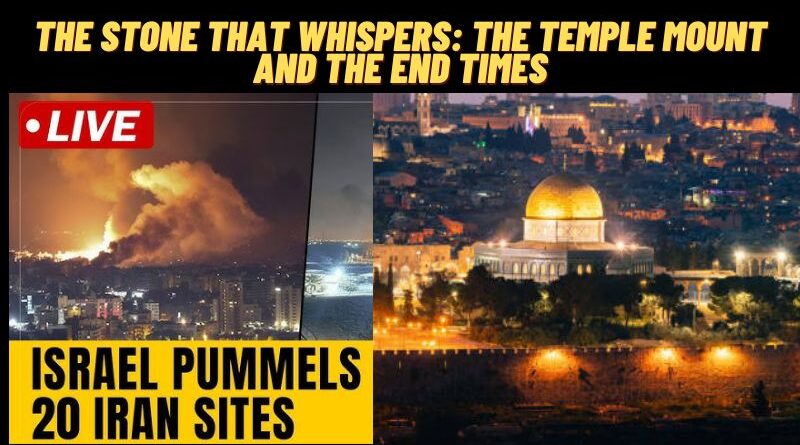On June 13, 2025, the long-simmering tension between Iran and Israel erupted into open conflict, shaking the Middle East and raising fears of a broader war.
The trigger was an Israeli airstrike on Tehran, targeting Iran’s nuclear and military facilities, following the International Atomic Energy Agency’s declaration that Iran had violated its nuclear obligations. The attack, which killed four Iranian soldiers and one civilian, marked a dramatic escalation from decades of covert operations and proxy wars between the two nations.
With the historic attack against Iran by the Israel, Biblical scholars again are asking if the Prophecy of Temple Mount is about to unfold.
In the heart of Jerusalem, where ancient stones hum with secrets older than empires, the Temple Mount rises—a jagged scar on the earth, sacred to billions, yet a crucible of conflict.
Its 35 acres of weathered limestone hold the weight of history and prophecy, a place where the divine and the mortal collide.
The Temple Mount’s prophetic weight stretches back millennia. For Jews, the First Temple, built by Solomon around 957 BCE, housed the Ark of the Covenant until its destruction by Babylonians in 587 BCE. The Second Temple, rebuilt in 516 BCE and expanded by Herod, stood until Rome razed it in 70 CE. Rabbinic tradition holds that the Third Temple will rise in the Messianic era, as foretold in Ezekiel 40-48, its construction signaling redemption. Some Orthodox Jews, like the Temple Institute, prepare sacred vessels, believing the time is near. Yet, the Dome of the Rock, built in 691 CE, stands where the Temple once did, making rebuilding a geopolitical flashpoint.
Christian eschatology, rooted in Daniel, Matthew 24, and Revelation, sees the Temple Mount as central to the end times. Many evangelicals believe a Third Temple must be rebuilt for the Antichrist to desecrate it, as described in 2 Thessalonians 2:4, before Christ’s Second Coming. The red heifer ritual, a purification rite mentioned in Numbers 19, is watched closely by some Christians and Jews, as its ashes are needed for Temple worship. Recent efforts to breed red heifers in Israel have fueled speculation, with some seeing them as a prophetic sign.
Islamic tradition, while less focused on the Mount itself, ties it to end times through the Dajjal and Isa’s return. Hadiths describe Isa praying at the Kaaba and battling the Dajjal, with Jerusalem as a backdrop. The Mount’s sanctity as the third holiest site in Islam makes any perceived threat—like Jewish calls for a Temple—a rallying cry for defense.
Eliyahu’s heart raced as he joined a group ascending the Mount, permitted under strict Waqf oversight. He passed the Dome, its mosaics a silent testament to centuries of faith, and stood where the Holy of Holies once was. He imagined the Temple rebuilt, priests in white linen offering sacrifices. But a shout broke his reverie—security forces dispersed a group chanting for the Temple’s return. Eliyahu hurried away, knowing such acts could spiral into violence.
Sarah, attending a conference in Jerusalem, heard a speaker claim a red heifer, born in 2024, was ready for sacrifice. The crowd buzzed with excitement, citing Daniel’s prophecy of a restored Temple. Yet, Sarah felt unease. Her Bible study group warned that the Antichrist’s deception would follow such signs. She prayed for discernment, the Mount’s silhouette looming in her mind.
Khalil, at a café in East Jerusalem, scrolled through news of clashes on the Mount. A Jewish activist had unfurled a banner calling for a Temple, sparking riots. Social media buzzed with claims of biblical fulfillment, while others warned of a third intifada. Khalil’s friend, a sheikh, spoke gravely: “The Dajjal’s time may come, but we must protect this sacred place.” Khalil nodded, fearing the Mount’s sanctity could be lost to chaos.
The Temple Mount’s role in end times prophecy is a tapestry of hope and dread. For some Jews, it promises redemption; for Christians, it heralds Christ’s return; for Muslims, it demands vigilance against deception. Yet, its shared sanctity breeds tension. A 202



